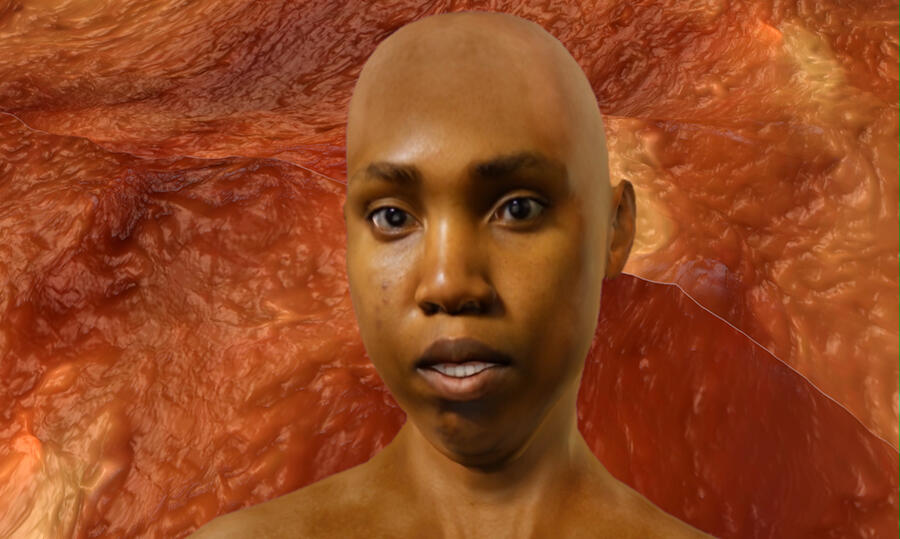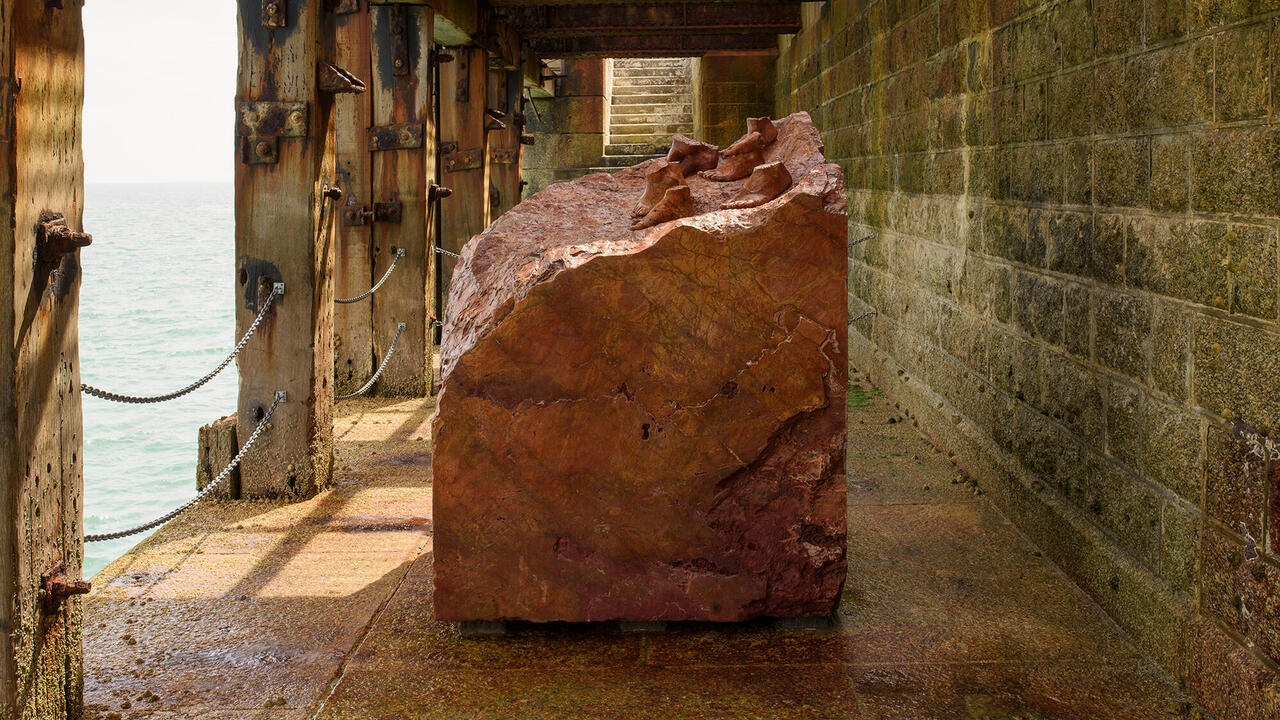Sondra Perry: Typhoon Coming On
A reckoning of dehumanized black identity at Serpentine Sackler Gallery, London
A reckoning of dehumanized black identity at Serpentine Sackler Gallery, London

Sondra Perry’s is an ‘un-body of work’ Arthur Jafa once suggested. At her show ‘Typhoon Coming On’ at the Serpentine Sackler Gallery it’s easy to see why. The New Jersey-born artist’s first major European exhibition is a reckoning of dehumanized black identity, as asset and digital phantasm.
The show’s title is taken from J. M.W. Turner’s painting of the British slave ship Zong, Slavers Throwing Overboard the Dead and Dying – Typhoon Coming On (1840). En route from Accra to Jamaica in 1781, 133 enslaved Africans were thrown from the vessel so the crew could claim insurance on the ‘goods’ they were transporting. Sharing the title of the exhibition, a digitally modified 2018 video of Turner’s oleaginous sea is projected onto the outer walls of the gallery interior. Up close the paint look less like water, more like roiling skin. The video switches periodically to a CGI animation of purple waves, rebooting the Zong massacre for the present day.

At the entrance to the gallery is a blue screen. A leitmotif in Perry’s work, it serves as a reminder of the ease with which identity can be co-opted and narratives enforced. Perry has familial experience when it comes to digital abduction. Her show at New York’s Bridget Donahue in early 2018 focused on the use of her brother’s image as a student athlete by the videogame company EA Sports, without his permission.
In one of the gallery’s inner chambers, I take a seat on Graft and Ash for a Three-Monitor Workstation (2016), an exercise bike wired up to three adjacent monitors installed wraparound and close to eye level. The bike is based on ‘deskercise’ equipment: office furniture that enables users to burn calories while they work. Like the rowing machine beside it, its mechanism has been adapted so it is resistant to use. As I struggle to pedal, a thin, bald on-screen avatar of Perry speaks of the limitations of the software used (her ‘fatness’ could not be replicated, she says) and of the negative health consequences that result from believing we live in a ‘just society’ where people get what they deserve, and wonders whether visitors to the gallery have benefited from colonial theft. ‘We are problems made to be fixed,’ she states, echoing the so-called moral argument for slavery, which justified industrialized barbarity on the grounds that blackness was a flaw requiring white intervention. At one point, Perry’s avatar is replaced by a rotating sphere of brown flesh: a disquieting vision of race as material.

The manufacture of human deficiencies is good business, enabling markets to flourish by providing remedies. (A strategy pertinent to the gallery itself: Purdue Pharma, owned by the descendents of Raymond and Mortimer Sackler – Mortimer along with his wife Theresa give their name to the gallery – is accused of making billions of dollars from the sale of the highly addictive OxyContin and falsely advertising the opiate as non-addictive pain relief.) As the looped video TK (Suspicious Glorious Absence) (2018) shows, fear, too, is a profitable economy. Shot using a body camera, mundane activities such as walking down the street and entering a house are accompanied by a canned horror soundtrack. This footage is spliced together with real US news reports of enforced curfews, riot police raiding homes and advertisements for mass-surveillance technology.
On the wall behind the monitor playing TK (Suspicious Glorious Absence) is a projection of Perry’s digitally manipulated skin, which ripples like fleshy water. Wherever you stand in the gallery you can see the sea in Turner’s painting of the Zong. It surrounds the interior, switching from oil paint to CGI, establishing an inescapable context. It doesn’t take long to realize that to visit ‘Typhoon Coming On’ is to enter into a re-enactment. This, I suspect, is Perry’s point.
Sondra Perry ‘Typhoon Coming On’ runs at Serpentine Sackler Gallery, London, until 20 May.
Main image: Sondra Perry, Graft and Ash for a Three Monitor Workstation, 2016, film still (detail). Courtesy: the artist and Bridget Donahue Gallery, New York






















